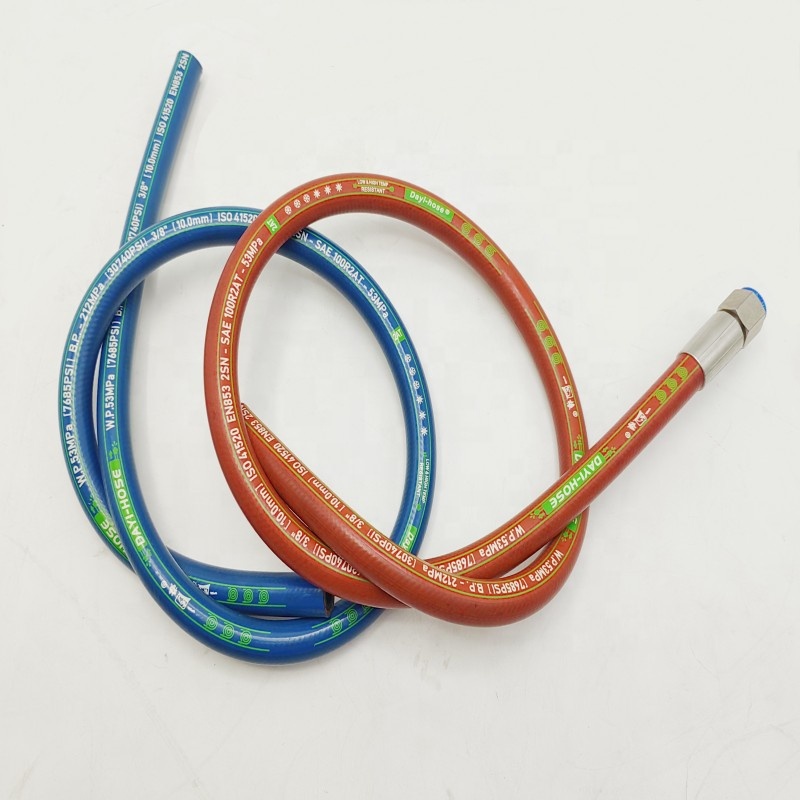335345435
Sep . 22, 2024 09:04 Back to list
hydraulic hose end fitting types
Understanding Hydraulic Hose End Fitting Types
Hydraulic systems play a crucial role in various industrial applications, from machinery to automotive sectors, by transmitting power through fluids. Integral to these systems are hydraulic hoses and their corresponding end fittings. The choice of end fittings significantly impacts the performance and reliability of hydraulic connections. This article delves into various types of hydraulic hose end fittings, their applications, and their significance.
1. Types of Hydraulic Hose End Fittings
Hydraulic hose end fittings come in several types, each designed to ensure a secure and leak-proof connection between hoses and other hydraulic components
. The most common types includea. Crimped Fittings Crimped fittings are among the most widely used types in hydraulic hose assemblies. They are made by mechanically compressing the fitting around the hose using a crimping tool. This method creates a strong bond that can withstand high pressure and reduces the risk of leakage. Common applications include construction equipment and agricultural machinery.
b. reusable fittings Reusable fittings are designed to be disassembled and reassembled multiple times. This feature is particularly useful in applications where frequent changes or repairs are necessary. They typically consist of a fitting and a clamp that can be reused as long as the hose remains in good condition. Such fittings are often found in maintenance-heavy industries, such as mining and forestry.
hydraulic hose end fitting types

c. A/N (AN) Fittings AN fittings, originally designed for aircraft use, are characterized by their precision and reliability. These fittings allow for a high degree of flexibility in hydronic systems, making them popular in both automotive and aerospace applications. The AN system utilizes a 37-degree flare, providing a tight, leak-free connection. They are generally employed in performance-based environments where pressure and flow dynamics are critical.
d. JIC Fittings JIC (Joint Industrial Council) fittings are similar to AN fittings but with a 37-degree flare fitting designed specifically for hydraulic systems. They are commonly used in industrial machinery and automotive applications due to their robustness and ease of installation. The JIC fitting is known for its strength and ability to handle high pressures.
e. BSP and NPT fittings British Standard Pipe (BSP) and National Pipe Thread (NPT) fittings are primarily used in applications that involve connecting hydraulic systems to threaded pipes. BSP fittings are common in Europe, while NPT is prevalent in North America. Each has its unique thread design and sealing methods, which can affect compatibility, so it is essential to choose the right fitting for your specific system.
2. Importance of Choosing the Right Fitting
Selecting the appropriate hydraulic hose end fitting is vital for ensuring the longevity, efficiency, and safety of hydraulic systems. The wrong fitting can lead to leaks, system failures, and costly downtime. Factors to consider when choosing fittings include the type of fluid, operating temperature, pressure ratings, and the specific application environment.
In conclusion, understanding the different types of hydraulic hose end fittings and their applications is essential for anyone involved in designing, maintaining, or operating hydraulic systems. With a wide array of options available, carefully selecting the right fitting will ensure optimal performance and reliability in any hydraulic application. Whether it’s crimped, reusable, AN, JIC, or threaded fittings, each has its unique advantages that can be leveraged for specific operational needs.
-
SAE 100 R17 Black Smooth Cover Hydraulic Hose
NewsMar.07,2025
-
SAE 100 R17 Black Smooth Cover Hydraulic Hose
NewsMar.07,2025
-
SAE 100 R17 Black Smooth Cover Hydraulic Hose
NewsMar.07,2025
-
SAE 100 R17 Black Smooth Cover Hydraulic Hose
NewsMar.07,2025
-
SAE 100 R17 Black Smooth Cover Hydraulic Hose
NewsMar.07,2025
-
steel wire braided hydraulic hose
NewsMar.07,2025



